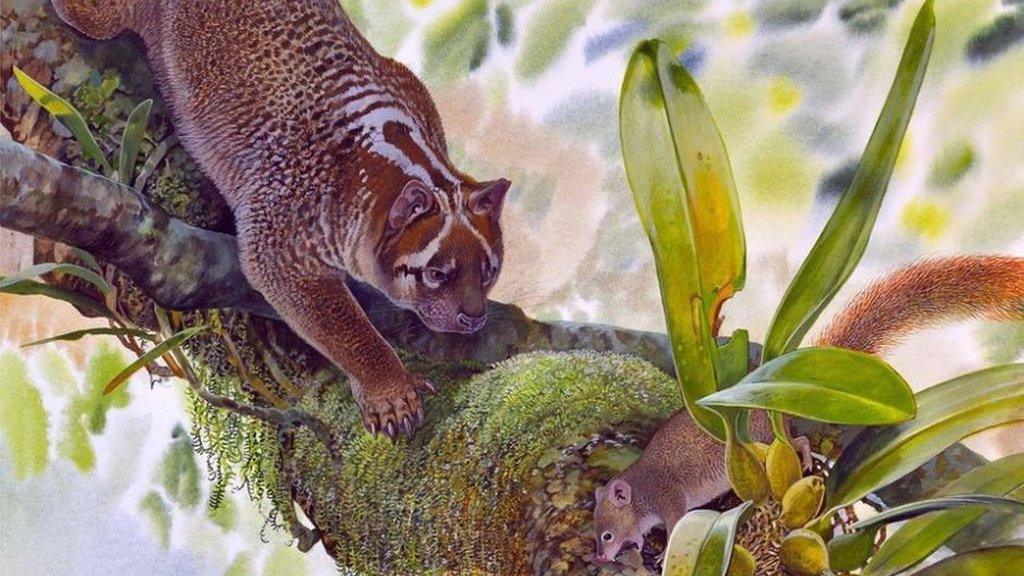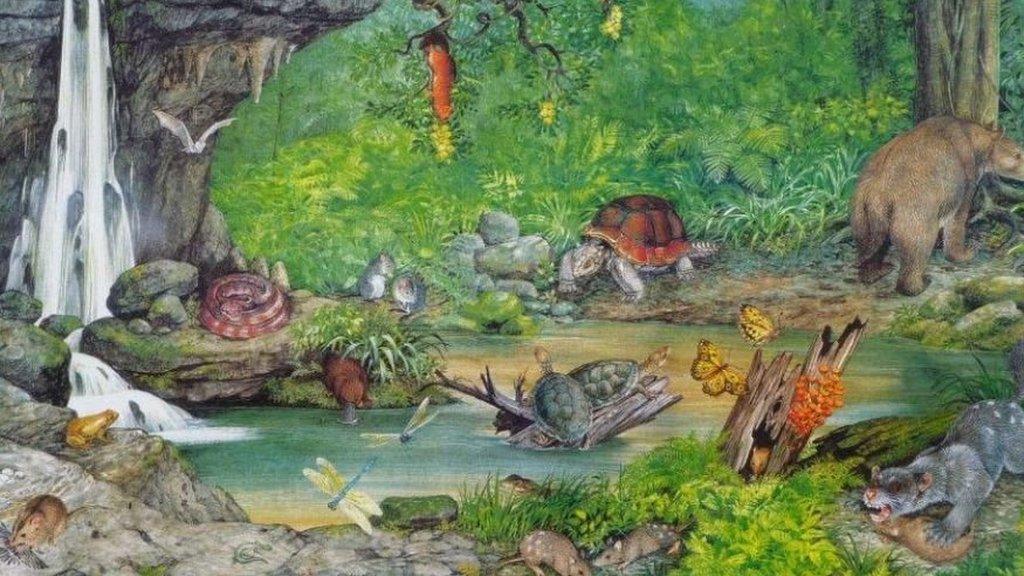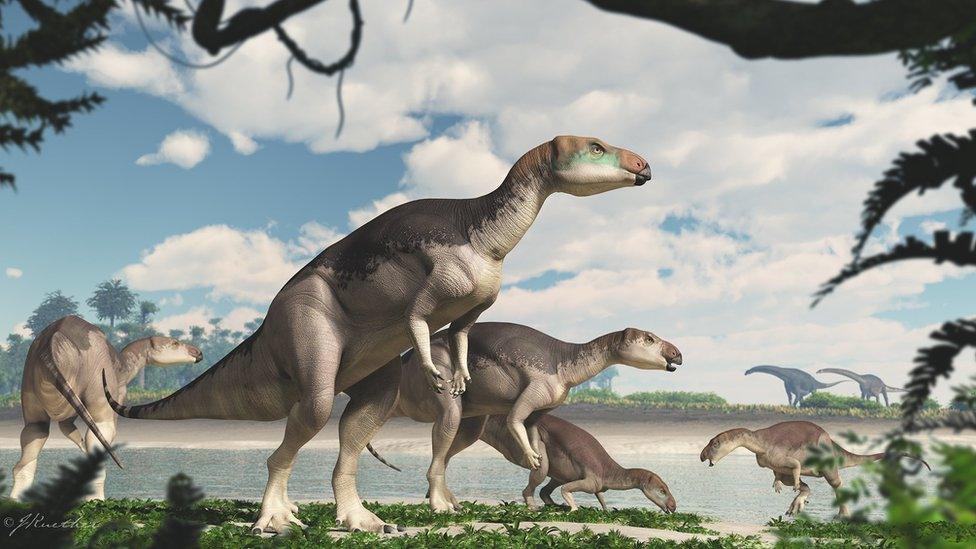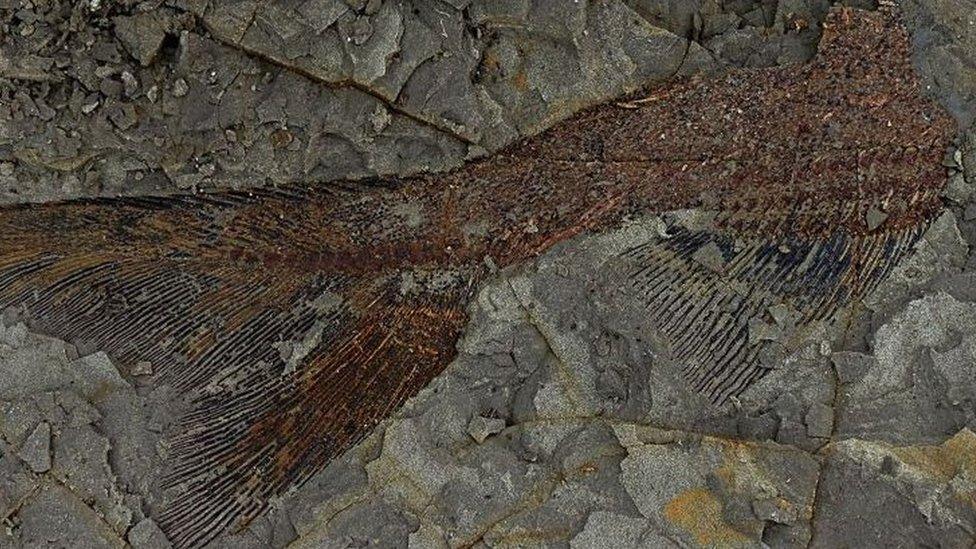Ancient marsupial lion fossil discovered in Queensland
- Published
- comments

This picture by Peter Schouten shows what the Lekaneleo might have looked like
A new genus of ancient marsupial lion has been discovered.
Palaeontologists discovered the fossil at Australia's Riversleigh World Heritage Area in Queensland, Australia.
A marsupial is an animal which has a pouch to carry their young.
Animals like kangaroos and koalas carry their babies in a pouch - for up to six months!
At first scientists thought it was part of an existing group of marsupial lions, called the Priscileo Rauscher family.
But after studying it, they found it was a new genus!
They called the new discovery Lekaneleo roskellyae.
A genus is the term for a group of species, that are all recognisably the same thing. For example a donkey and a horse are different species, but part of the same genus.
Although marsupial lions died out 35,000 years ago, they were pretty fearsome creatures.
Scientists think the Lekaneleo was about the size of a cat, but with incredibly powerful teeth!
"Lekaneleo had teeth in it that are a bit like micro bolt-cutting teeth; there is nothing this animal decided to eat that it couldn't have cut into bite-size, swallowable pieces almost immediately" said Michael Archer, professor of biological, earth and environmental science at the University of New South Wales to CNN.
They also believe the mini marsupial lions lived in trees and might have eaten birds, snakes and other small animals.

This picture by Dorothy Dunphy shows what the Riversleigh area might have looked like 18 million years ago
As well as Lekaneleo, some of the other marsupial lions found at Riversleigh include the Microleo attenboroughi, named after Sir David Attenborough!
Experts are also trying to find out if climate change might have been a reason why the marsupial lions died out.
At one point the temperature in Riversleigh increased by two degrees, which resulted in half of its species being lost.
- Published11 June 2019

- Published11 July 2013
- Published2 April 2019

